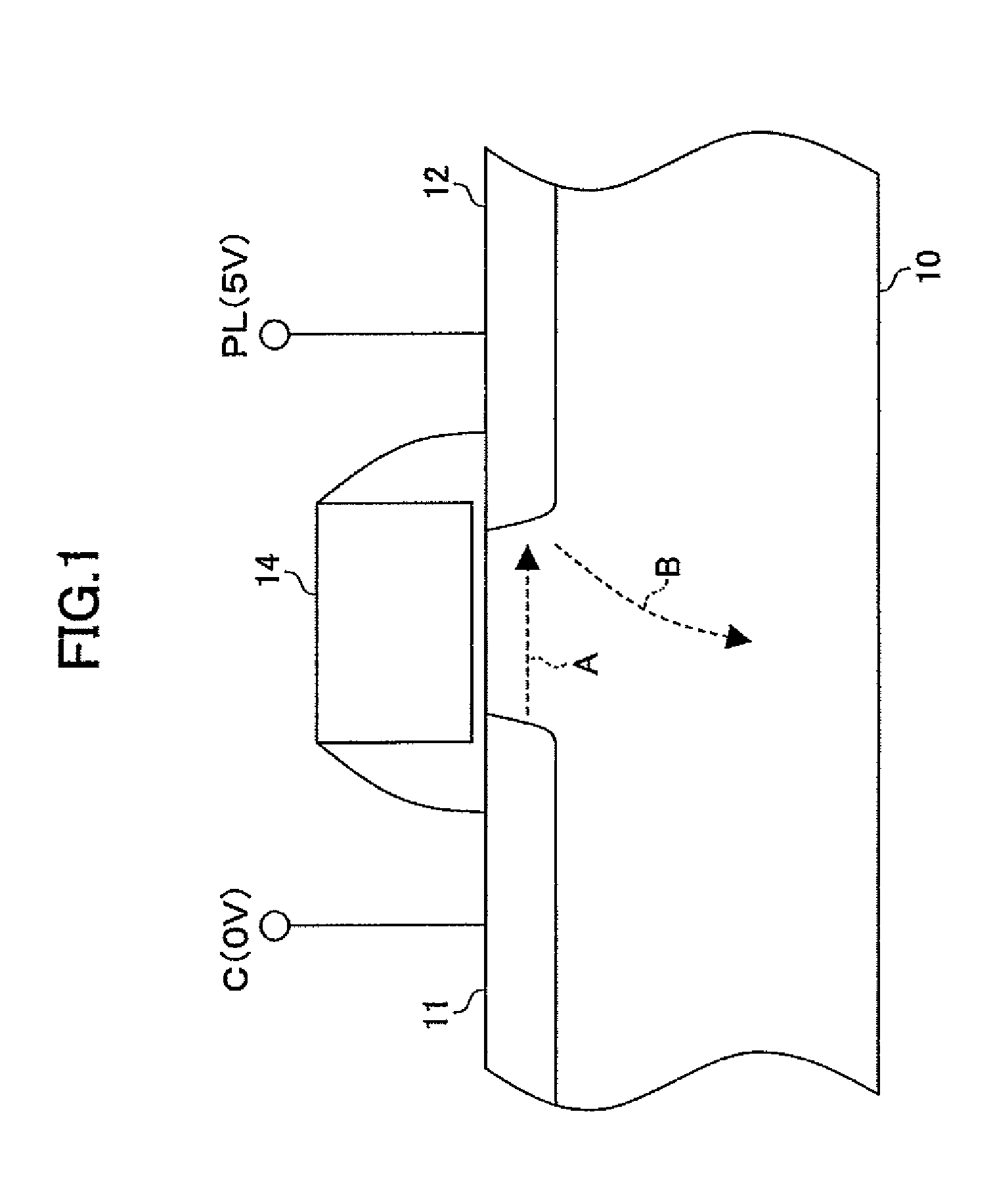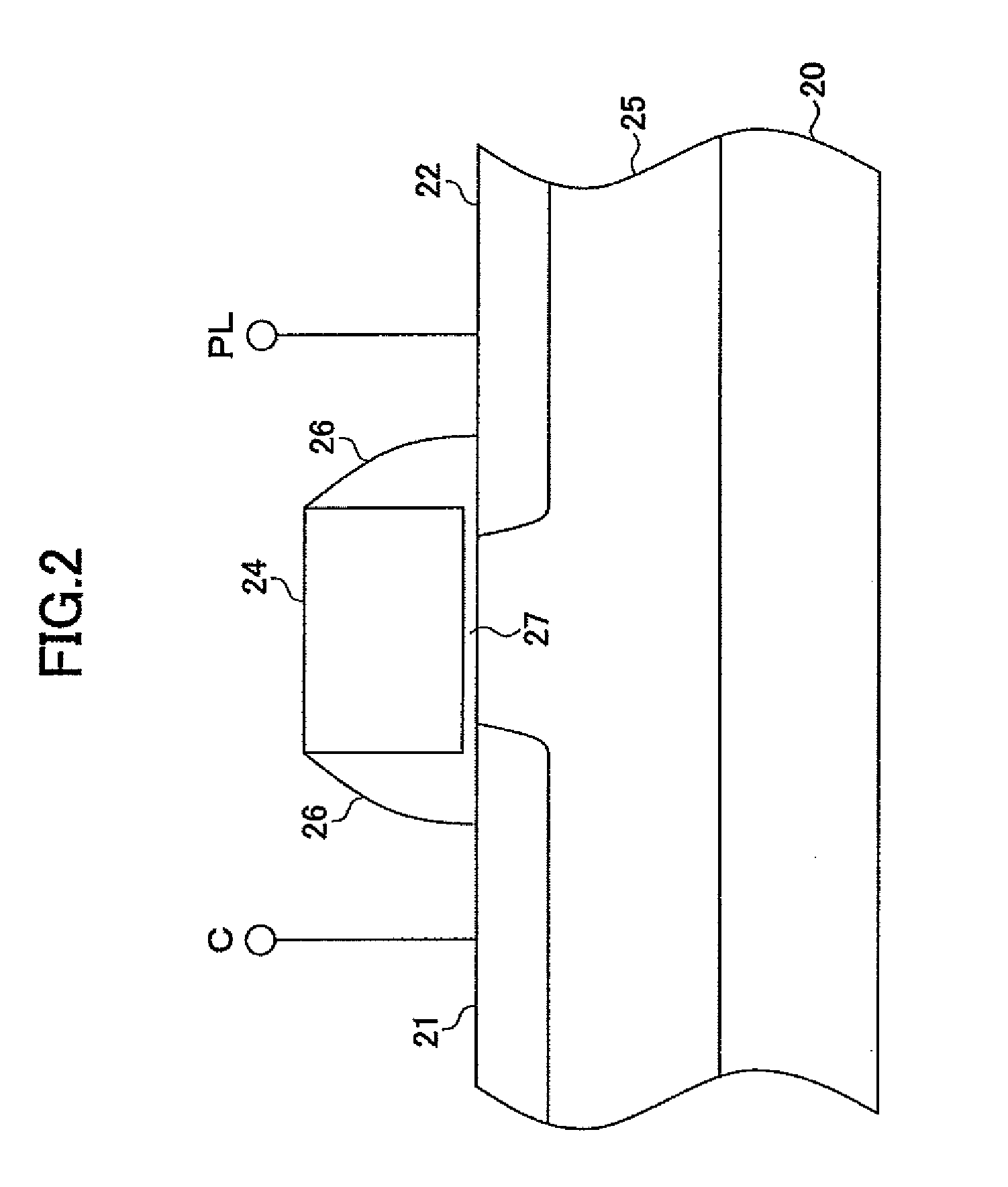Nonvolatile semiconductor memory circuit utilizing a MIS transistor as a memory cell
a technology of mis transistor and memory cell, which is applied in the field of memory circuits, can solve problems such as circuits that do not function properly as designed, and achieve the effect of reducing the threshold voltage of the mis transistor and relatively low resistance of the highly doped substrate layer
- Summary
- Abstract
- Description
- Claims
- Application Information
AI Technical Summary
Benefits of technology
Problems solved by technology
Method used
Image
Examples
Embodiment Construction
[0028]The present invention is directed to PermSRAM. Namely, the memory cell transistors are MIS (metal-insulating film-semiconductor) transistors that have the same structure as ordinary MIS transistors used for conventional transistor functions (e.g., switching function). These memory cell transistors use neither a special structure such as a floating gate nor a special material such as a ferroelectric material or a ferromagnetic material. These MIS transistors are configured to selectively experience a hot-carrier effect on purpose for storage of one-bit data. The hot-carrier effect leaves an irreversible lingering change in the transistor characteristics to the MIS transistors. A change in the transistor characteristics caused by the hot-carrier effect achieves nonvolatile data retention.
[0029]In the following description, NMOS transistors are used as an example of the nonvolatile-memory-cell MIS transistors, but such examples are not intended to be limiting. PMOS transistors ma...
PUM
 Login to View More
Login to View More Abstract
Description
Claims
Application Information
 Login to View More
Login to View More - R&D
- Intellectual Property
- Life Sciences
- Materials
- Tech Scout
- Unparalleled Data Quality
- Higher Quality Content
- 60% Fewer Hallucinations
Browse by: Latest US Patents, China's latest patents, Technical Efficacy Thesaurus, Application Domain, Technology Topic, Popular Technical Reports.
© 2025 PatSnap. All rights reserved.Legal|Privacy policy|Modern Slavery Act Transparency Statement|Sitemap|About US| Contact US: help@patsnap.com



